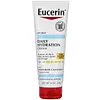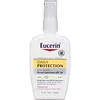What's inside
What's inside
 Key Ingredients
Key Ingredients

No key ingredients
 Benefits
Benefits

 Concerns
Concerns

 Ingredients Side-by-side
Ingredients Side-by-side

Water
Skin ConditioningGlycerin
HumectantTapioca Starch
Butylene Glycol
HumectantCetyl Alcohol
EmollientHydrogenated Coco-Glycerides
EmollientMyristyl Myristate
EmollientStearyl Alcohol
EmollientPalmitic Acid
EmollientGlyceryl Stearate
EmollientStearic Acid
CleansingGlycyrrhiza Inflata Root Extract
Skin ConditioningDimethicone
Emollient1,2-Hexanediol
Skin ConditioningPhenoxyethanol
PreservativeSilica Dimethyl Silylate
EmollientDecylene Glycol
Skin ConditioningAcrylates/C10-30 Alkyl Acrylate Crosspolymer
Emulsion StabilisingBenzyl Alcohol
PerfumingXanthan Gum
EmulsifyingSodium Hydroxide
BufferingTrisodium EDTA
Water, Glycerin, Tapioca Starch, Butylene Glycol, Cetyl Alcohol, Hydrogenated Coco-Glycerides, Myristyl Myristate, Stearyl Alcohol, Palmitic Acid, Glyceryl Stearate, Stearic Acid, Glycyrrhiza Inflata Root Extract, Dimethicone, 1,2-Hexanediol, Phenoxyethanol, Silica Dimethyl Silylate, Decylene Glycol, Acrylates/C10-30 Alkyl Acrylate Crosspolymer, Benzyl Alcohol, Xanthan Gum, Sodium Hydroxide, Trisodium EDTA
Phenylbenzimidazole Sulfonic Acid 2%
UV AbsorberEthylhexyl Methoxycinnamate 7.5%
UV AbsorberEthylhexyl Salicylate 4.5%
UV AbsorberTitanium Dioxide 2.4%
Cosmetic ColorantZinc Oxide 4.8%
Cosmetic ColorantWater
Skin ConditioningGlycerin
HumectantC12-15 Alkyl Benzoate
AntimicrobialDimethicone
EmollientCyclomethicone
EmollientMethylpropanediol
SolventCetearyl Alcohol
EmollientCetyl Alcohol
EmollientCeteareth-20
CleansingPhenoxyethanol
PreservativeGlyceryl Stearate Se
EmulsifyingSodium Lactate
BufferingLactic Acid
Buffering1,2-Hexanediol
Skin ConditioningHydrogenated Coco-Glycerides
EmollientVp/Hexadecene Copolymer
Xanthan Gum
EmulsifyingPEG-40
HumectantRicinus Communis Seed Oil
MaskingSodium Hydroxide
BufferingTrisodium EDTA
Alumina
AbrasiveSodium Cetearyl Sulfate
CleansingTriethoxycaprylylsilane
Simethicone
EmollientPhenylbenzimidazole Sulfonic Acid 2%, Ethylhexyl Methoxycinnamate 7.5%, Ethylhexyl Salicylate 4.5%, Titanium Dioxide 2.4%, Zinc Oxide 4.8%, Water, Glycerin, C12-15 Alkyl Benzoate, Dimethicone, Cyclomethicone, Methylpropanediol, Cetearyl Alcohol, Cetyl Alcohol, Ceteareth-20, Phenoxyethanol, Glyceryl Stearate Se, Sodium Lactate, Lactic Acid, 1,2-Hexanediol, Hydrogenated Coco-Glycerides, Vp/Hexadecene Copolymer, Xanthan Gum, PEG-40, Ricinus Communis Seed Oil, Sodium Hydroxide, Trisodium EDTA, Alumina, Sodium Cetearyl Sulfate, Triethoxycaprylylsilane, Simethicone
 Reviews
Reviews

Ingredients Explained
These ingredients are found in both products.
Ingredients higher up in an ingredient list are typically present in a larger amount.
1,2-Hexanediol is a synthetic liquid and another multi-functional powerhouse.
It is a:
- Humectant, drawing moisture into the skin
- Emollient, helping to soften skin
- Solvent, dispersing and stabilizing formulas
- Preservative booster, enhancing the antimicrobial activity of other preservatives
Cetyl Alcohol is a fatty alcohol. Fatty Alcohols are most often used as an emollient or to thicken a product.
Its main roles are:
Though it has "alcohol" in the name, it is not related to denatured alcohol or ethyl alcohol.
The FDA allows products labeled "alcohol-free" to have fatty alcohols.
Learn more about Cetyl AlcoholDimethicone is a type of synthetic silicone created from natural materials such as quartz.
What it does:
Dimethicone comes in different viscosities:
Depending on the viscosity, dimethicone has different properties.
Ingredients lists don't always show which type is used, so we recommend reaching out to the brand if you have questions about the viscosity.
This ingredient is unlikely to cause irritation because it does not get absorbed into skin. However, people with silicone allergies should be careful about using this ingredient.
Note: Dimethicone may contribute to pilling. This is because it is not oil or water soluble, so pilling may occur when layered with products. When mixed with heavy oils in a formula, the outcome is also quite greasy.
Learn more about DimethiconeGlycerin is already naturally found in your skin. It helps moisturize and protect your skin.
A study from 2016 found glycerin to be more effective as a humectant than AHAs and hyaluronic acid.
As a humectant, it helps the skin stay hydrated by pulling moisture to your skin. The low molecular weight of glycerin allows it to pull moisture into the deeper layers of your skin.
Hydrated skin improves your skin barrier; Your skin barrier helps protect against irritants and bacteria.
Glycerin has also been found to have antimicrobial and antiviral properties. Due to these properties, glycerin is often used in wound and burn treatments.
In cosmetics, glycerin is usually derived from plants such as soybean or palm. However, it can also be sourced from animals, such as tallow or animal fat.
This ingredient is organic, colorless, odorless, and non-toxic.
Glycerin is the name for this ingredient in American English. British English uses Glycerol/Glycerine.
Learn more about GlycerinHydrogenated Coco-Glycerides isn't fungal acne safe.
Phenoxyethanol is a preservative that has germicide, antimicrobial, and aromatic properties. Studies show that phenoxyethanol can prevent microbial growth. By itself, it has a scent that is similar to that of a rose.
It's often used in formulations along with Caprylyl Glycol to preserve the shelf life of products.
Sodium Hydroxide is also known as lye or caustic soda. It is used to adjust the pH of products; many ingredients require a specific pH to be effective.
In small amounts, sodium hydroxide is considered safe to use. However, large amounts may cause chemical burns due to its high alkaline.
Your skin has a natural pH and acid mantle. This acid mantle helps prevent harmful bacteria from breaking through. The acid mantle also helps keep your skin hydrated.
"Alkaline" refers to a high pH level. A low pH level would be considered acidic.
Learn more about Sodium HydroxideWe don't have a description for Trisodium EDTA yet.
Water. It's the most common cosmetic ingredient of all. You'll usually see it at the top of ingredient lists, meaning that it makes up the largest part of the product.
So why is it so popular? Water most often acts as a solvent - this means that it helps dissolve other ingredients into the formulation.
You'll also recognize water as that liquid we all need to stay alive. If you see this, drink a glass of water. Stay hydrated!
Learn more about WaterXanthan gum is used as a stabilizer and thickener within cosmetic products. It helps give products a sticky, thick feeling - preventing them from being too runny.
On the technical side of things, xanthan gum is a polysaccharide - a combination consisting of multiple sugar molecules bonded together.
Xanthan gum is a pretty common and great ingredient. It is a natural, non-toxic, non-irritating ingredient that is also commonly used in food products.
Learn more about Xanthan Gum